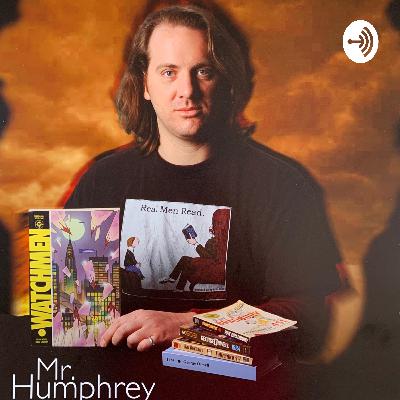"Why Leaves Turn Color in the Fall," by Diane Ackerman
Description
Episode #34
Rhetorical analysis of the popular science essay "Why Leaves Turn Color in the Fall" by Diane Ackerman. Recommended for high school.
(And I don't know why I shortened it in the episode to "Why Leaves Turn Color." My bad.)
Analysis focuses on figurative language and theme.
*CW: mentions of sex, discussions of death
#10 in the Feminist Justice series
Link to PDF version of the essay: http://mssandersonsouthcache.weebly.com/uploads/8/5/8/9/8589339/whyleavesturncolorinfall_2012.pdf
Figurative Language present in the essay and discussed here (*This is an incomplete list):
symbol: Something (usually simple and concrete) which represents something else (usually complex and abstract); i.e., a cross representing Christianity
metaphor: An implied comparison between two unlike things which share a certain trait; i.e., trees encased in glass after a winter storm (glass=ice)
simile: A stated comparison between two unlike things which share a certain trait, most often using "like" or "as" to show the comparison; i.e., thou art like a summer's day, sunny and warm
personification: A metaphor in which human traits are given to a non-human thing; i.e., "The rocks complained and then cursed as the earth quaked"; or an abstract is given a human avatar; i.e., Father Time
hyperbole: An extreme exaggeration meant to show an emotional state; i.e., "I'm hungry" is a statement, "I'm starving" is an exaggeration, "I'm hungry enough to eat a thousand horses" is hyperbole
understatement: An intentional de-emphasizing of a situation, usually for ironic or sardonic effect; i.e., Monty Python's Black Knight saying "It's just a flesh wound" after King Arthur cut the Knight's arm off
euphemism: A less offensive or less jarring term used in place of a more offensive or jarring term; i.e., "passed away" for "died"
allusion: A reference to something already known by the audience, from literature, history, popular culture, etc.; i.e., referring to a couple as Romeo and Juliet
synecdoche: When a piece of a whole is used to represent the whole, or a whole used to represent a piece; i.e., "wheels" referring to an entire car
metonymy: When an associated term is used to represent something, i.e., "suits" referring to businesspeople
pun: Word play based on words that sound similar or that have multiple meanings; i.e., "Make like a tree and leave!"
onomatopoeia: A word that sounds like (or is a phonetic spelling of) the sound or what it represents; i.e., meow, baa, snap, crackle, pop
alliteration: When several words close together have the same initial sound; i.e., Peter Piper picked a pepperoni pizza
assonance: When several words close together have the same vowel sound with different consonant sounds, i.e., I like nice pies
consonance: When several words close together have the same consonant sound in the middle or at the ends of the words; i.e., sounds at the ends of words
irony: When what happens is the opposite of what one would expect, or when one's meaning is the opposite of what one says






